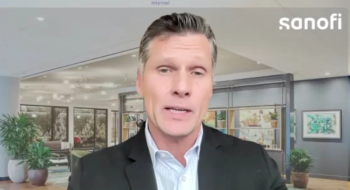
Adjuvant taxane-based regimen with docetaxel trumps fluorouracil, doxorubicin, and cyclophosphamide for treatment of high-risk, node-negative breast cancer
As compared to fluorouracil, doxorubicin, and cyclophosphamide, an adjuvant taxane-based regimen containing docetaxel, doxorubicin, and cyclophosphamide was shown to increase the rate of disease-free survival by 32% among women with high-risk, node-negative breast cancer.
Key Points
As compared to fluorouracil, doxorubicin, and cyclophosphamide (FAC), an adjuvant taxane-based regimen containing docetaxel, doxorubicin, and cyclophosphamide (TAC) was shown to increase the rate of disease-free survival by 32% among women with high-risk, node-negative breast cancer. The benefit of TAC was consistent, regardless of hormone-receptor status, menopausal status, or the presence of risk factors for cancer recurrence.
These findings from the Spanish Breast Cancer Research Group (GEICAM 9805) trial published in the December 2010, New England Journal of Medicine, expand upon the results of the randomized BCIRG 001 trial, which show that TAC is effective both in patients with node-positive and in those with high-risk, node-negative early-stage breast cancer.
In their paper, researchers stressed, "Most taxane trials have focused on patients with axillary-lymph-node-positive breast cancer, although a small number of trials have involved both patients with node-positive disease and those with node-negative disease." They further emphasized, "Although some current estimates show that a majority of patients with operable breast cancer have node-negative disease at diagnosis, there is little guidance about taxane use in patients with node-negative disease."
Rates of grade 3 and 4 adverse events (according to the National Cancer Institute's Common Toxicity Criteria) occurred in 28.2% of patients treated with TAC and 17.0% of those treated with FAC (P<.001), with serious events occurring at rates of 22.4% and 4.2%. Neutropenia and leukopenia (P<.001 for both) were the most significant adverse events caused by TAC. The researchers underscored, however, "The acute toxic effects associated with TAC are manageable when treatment is combined with primary G-CSF prophylaxis."
Also of note, overall survival rates (TAC, 95.2%; FAC, 93.5%) were not significantly different between TAC- and FAC-treated patients (HR=0.76; 95% CI, 0.45–1.26); although, the number of deaths during trial follow-up was small (n=60).
"Because of the limited number of deaths, survival data are still immature," the authors noted. "The small number of deaths occurring at the time of analysis indicates that a longer follow-up period will be needed to assess survival among patients with node-negative breast cancer as compared with those who have node-positive disease."
The prior BCIRG 001 trial in women with node-positive breast cancer showed TAC reduced overall mortality by a statistically significant 30% compared to FAC (P=.008).
SOURCE
Martín M, Seguí MA, Antón A; GEICAM 9805 Investigators. Adjuvant docetaxel for high-risk, node-negative breast cancer. New Engl J Med. 2010;363(23):2200–2210.
Newsletter
Get the latest industry news, event updates, and more from Managed healthcare Executive.




















































